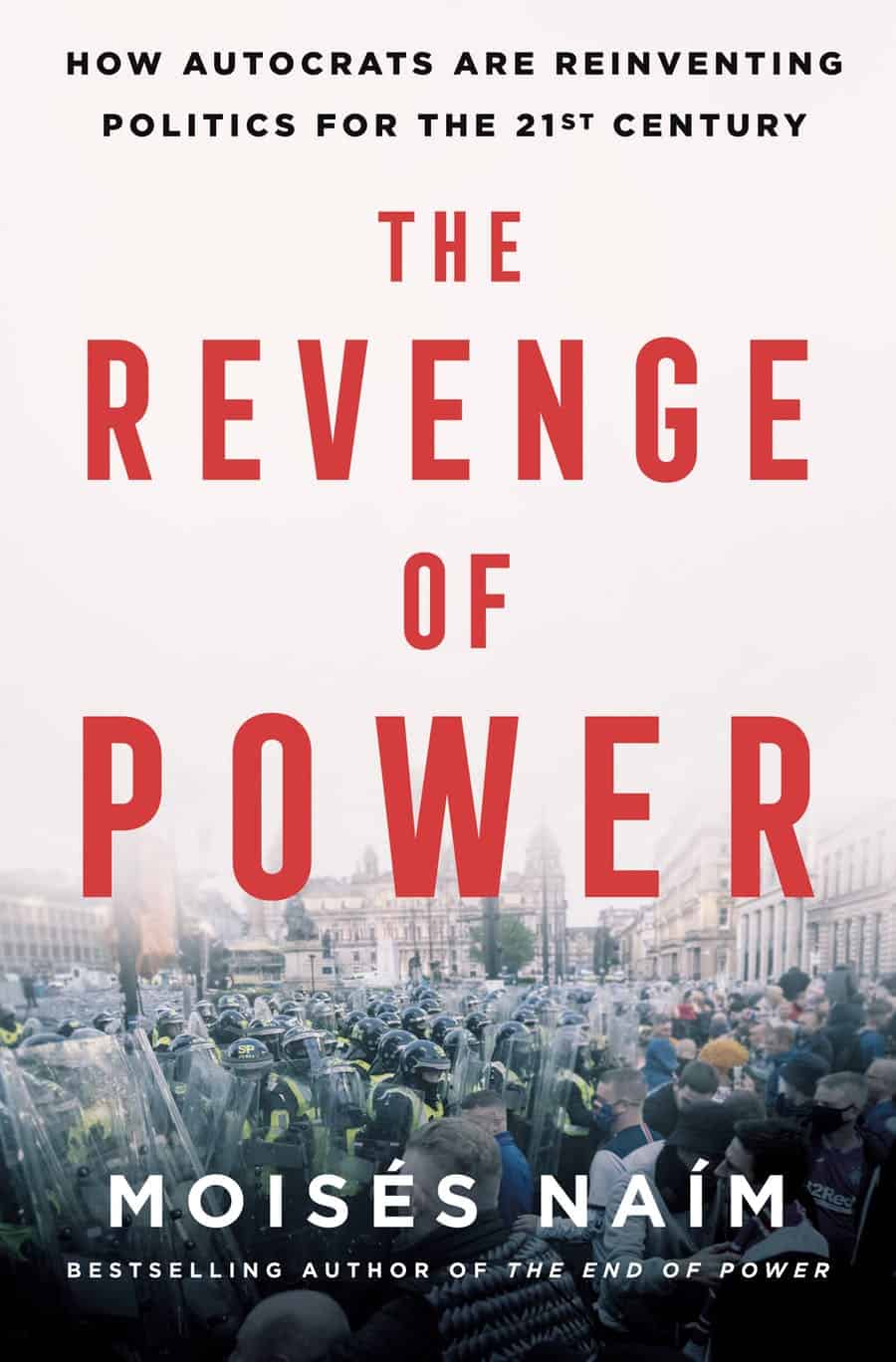The Revenge of Power Explains Why Democracy Is Dying

Democracies around the world are dying a slow death to rising authoritarianism and autocracy. Moisés Naím’s latest book, The Revenge of Power, does a great job at explaining why.
While authoritarian regimes in Russia and China lead the charge in destroying the western world order, some of the most pernicious power grabs come from within democracies themselves. One only has to look at the United States in the past decade for a glaring example.
Naím explains how power itself has not changed. However, the way 21st century autocrats wield it has. He uses a “Three P Framework” to illustrate this point.
The “Three P Framework” for assessing contemporary autocrats and authoritarians
The first “P” is populism. Contemporary autocrats and authoritarians appeal first to ordinary people who feel wronged by the system. They target elites, the media, and democratic institutions. They often make promises to “drain the swamp” of the political establishment.
Instead of draining it, 21st century autocrats and authoritarians often flood it further through the second “P”, polarization. They target political enemies, sow political tribalism, and generate an “us v. them” mentality. Starting bitter culture wars are a fan favorite.
They also operate in an environment fueled by the third “P”, post-truths. These leaders wage war on truth. If something or someone does not fit their autocratic or authoritarian narrative, they create a fiction about the event or person. In America, we saw this most vividly after January 6th, especially as Republicans walked back their condemnation in defense of Donald Trump.
This “Three P Framework” from Naím is nothing new. The three “Ps” have been used by autocrats and authoritarians since man organized himself into civil society. How they are used today though for gaining and maintaining power is more unique. And it is not isolated to one culture, economy, or place.
The “Three P Framework” applies globally
In The Revenge of Power, Moisés Naím weaves one compelling story together after the next. How Italy’s Silvio Berlusconi foretold the rise of Donald Trump in America. How Hugo Chavez used a talk show to ride a wave of populism that mirrored the path to power of other Latin American autocrats. How Vladimir Putin has built the model for the modern day authoritarian regime disguised as a democracy.
Despite vastly different cultural, economic, and political circumstances, 21st century autocrats and authoritarians wield power in starkly similar ways. Their three “P” approach is largely the same. And how they gain power and reshape society is subtle.
20th century power was shock and awe, whereas 21st century power is more subtle
Totalitarian and communist leaders in the 20th century used brute force. They started world wars, shipped people to concentration camps and gulags, and reigned terror over their societies. Secret police like the Gestapo and the Stasi brutally removed dissidents from society.
The 21st century autocrats and authoritarian regimes wield power differently, although their ends are generally the same. They slowly erode any existing democratic institutions, such as an independent media or judiciary. Power is gradually centralized within the state or even more subtly through state-controlled entities.
Naím’s example of Hungary’s Viktor Orban is a perfect illustration of this approach. Orban is not only the longest serving leader in the European Union, he is also the most autocratic. He has slowly taken control over Hungary’s judiciary and has practically bankrupted any independent media critical of his regime.
It’s no surprise why today’s Republican Party is obsessed with him. They have many of the same objectives, whether taking over the courts or any other democratic institutions.
For Naím, hope is not lost for democracy
It is easy to be cynical about democracy and the western world order these days. So much commentary recently has blamed the west for the world’s problems while excusing or ignoring aggressions made by Russia and China. The debate over NATO posing a security threat to Russia is a good example.
The fact is that no system has done better for humanity than a democratic political system mixed with free market economic principles. However, as Naím describes in The Revenge of Power, when the social ills of this system are allowed to run rampant, a door opens that welcomes in autocracy and authoritarianism.
Suddenly, strongmen rise to power on waves of populism, polarization, and post-truths. They prey on the peoples’ distrust of the system, hatred towards “elites”, and perceived inequalities. The approach of strongmen like Trump works so effectively because part of what they say is in fact true. The majority of their divisive rhetoric though is in service to their own power, not to their country or its people.
Naím proposes interesting solutions like ranked choice voting and citizen councils. He also emphasizes the importance of controlling misinformation online. In a 21st century media environment where everyone practically operates as their own editor given the death of traditional journalism, it is increasingly difficult to identify truth. Even the most educated among us have trouble thinking critically, spotting deepfakes, and cutting through the social media chaos.
Which is why a book like The Revenge of Power is so important for this time. It gives readers a framework for assessing leaders, helping them scrutinize how they wield power and for what aims. The more people can develop these crucial 21st century skills, the weaker autocrats and authoritarians will become.
For more content, check out our Podcast, short stories on Vocal, and other articles on Medium.
If you are not a Medium member, consider becoming one, which gives you access not only to all of our content but writing from many other great writers. If you use this link I will receive a small commission, at no extra cost to you.



0 Comments